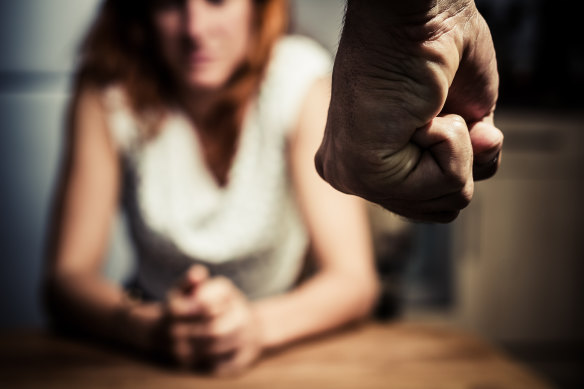This was published 2 years ago
Opinion
Too many Australian women are forced to make an intolerable choice
Anne Summers
ColumnistI am not sure what shocked me the most: the prevalence of domestic violence in Australia or the consequences for women deciding whether to leave violent relationships.
I had decided to do a deep dive into the statistics in the 2016 Personal Safety Survey conducted by the Australian Bureau of Statistics because it seemed to me that we were making little or no progress in reducing violence and that perhaps we needed more information.

Many of us were familiar with the figure that 1 in 6 Australian women have suffered violence at the hands of a previous partner.Credit: iStock
Many of us were familiar with the oft-quoted figure that 1 in 6 Australian women have suffered violence at the hands of a previous partner. That’s 17.3 per cent of Australian women aged 18 or over. Seems like a high number – until you realise that because it includes all women, including those who have never had a partner, it is not an accurate measure of the extent of violence in this country.
If you look just at women who have, now or in the past, had a partner, the figure rises to a startling 22 per cent. That’s almost one-quarter of the women of Australia and is a very sobering figure indeed.
But dig deeper and it gets worse. Much worse.
If you look at women who are now single mothers with children living with them aged under 18, we learn that a truly shocking 60 per cent of them have experienced physical or sexual violence, and 70 per cent have experienced emotional abuse, what we now call coercive control.
But this violence did not occur while they were single. All 185,700 single mothers in my study were in relationships, married or de facto, at the time of the violence. They are single mothers now because they left the violent relationships.
The ABS provided me with extensive data on the details of the physical and emotional violence these women had suffered, but it also gave me truly confronting information on the consequences of leaving, of the often dire poverty, that 50 per cent of these women and their children are now forced to live in.
This is because even single mothers with jobs are too often unable to earn enough to support their families and must rely on federal government payments. The base rate for the Parenting Payment Single is currently $892.20 a fortnight, but once the woman’s youngest child turns eight she is forced to go on the dole.
As far as the state is concerned, she is no longer a single mother but is unemployed, and is therefore put onto JobSeeker, which has a current base rate of $691.00 a fortnight. (There are supplements for energy, rent and for each child depending on its age and whether the mother has been deemed to have received any support from the child’s father, but even with these the single parent family is most likely to be in financial distress.)
The ABS figures show, for instance, that in 2016, 48.1 per cent of single mothers had a gross weekly equivalised household income of $460 a week or less.
No wonder so many of them experience horrendous cash flow problems. For instance, 78,400 of them could not pay their utilities bills on time, 20,500 were unable to heat or cool their homes and 17,400 went without meals.
But, for me, the most poignant finding was the 36,300 women who could not afford to register or insure their cars. We know that it is virtually impossible to juggle work, childcare, shopping and much of daily life if you have kids and no car.
These women have little chance of escaping this poverty without the government providing far more realistic payments, and effective training and job-seeking programs.
But the biggest takeaway from my study is that it is not poverty that causes domestic violence, as is often thought. It is the other way round. Violence causes poverty.
And it is this realisation that makes so many women remain in violent relationships.
In 2016, the ABS statistics reveal, an estimated 275,000 women had suffered physical or sexual violence from their current partner. Around 82,000 of them left temporarily but returned, with around 12,000 saying they had no money or nowhere to go. A further 90,000 wanted to leave but didn’t, with a quarter also citing lack of money.
Note that more women stayed (275,000) than left (185,700). These women have chosen violence over poverty. What kind of society forces women into such an intolerable situation?
The federal government may not be able to immediately stop domestic violence, but it could stop poverty. Let’s hope that, unlike previous governments, the Albanese government decides that it is intolerable for women who have fled domestic violence to be living in dire poverty. In Australia. In 2022.